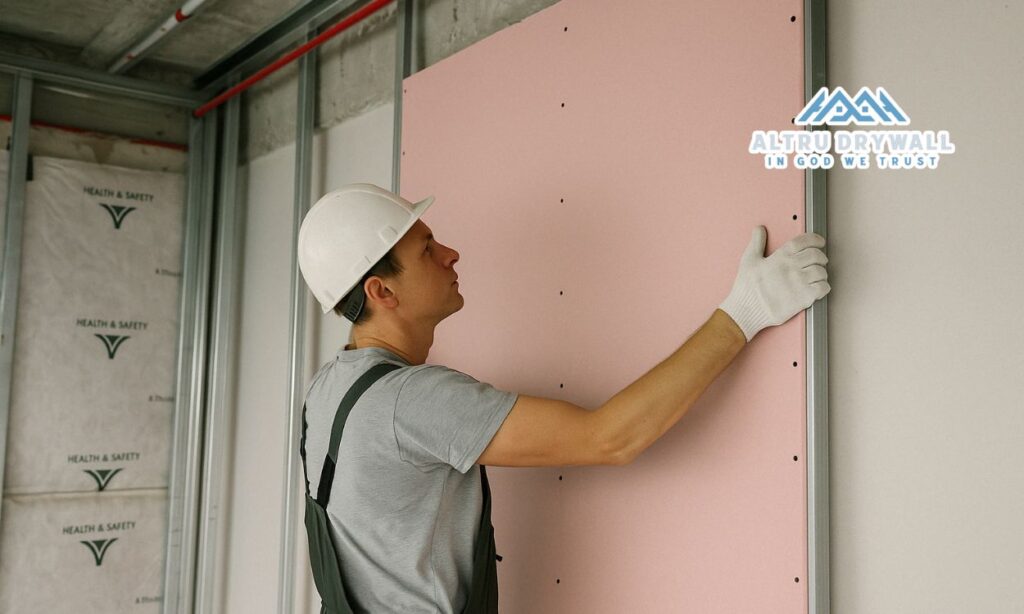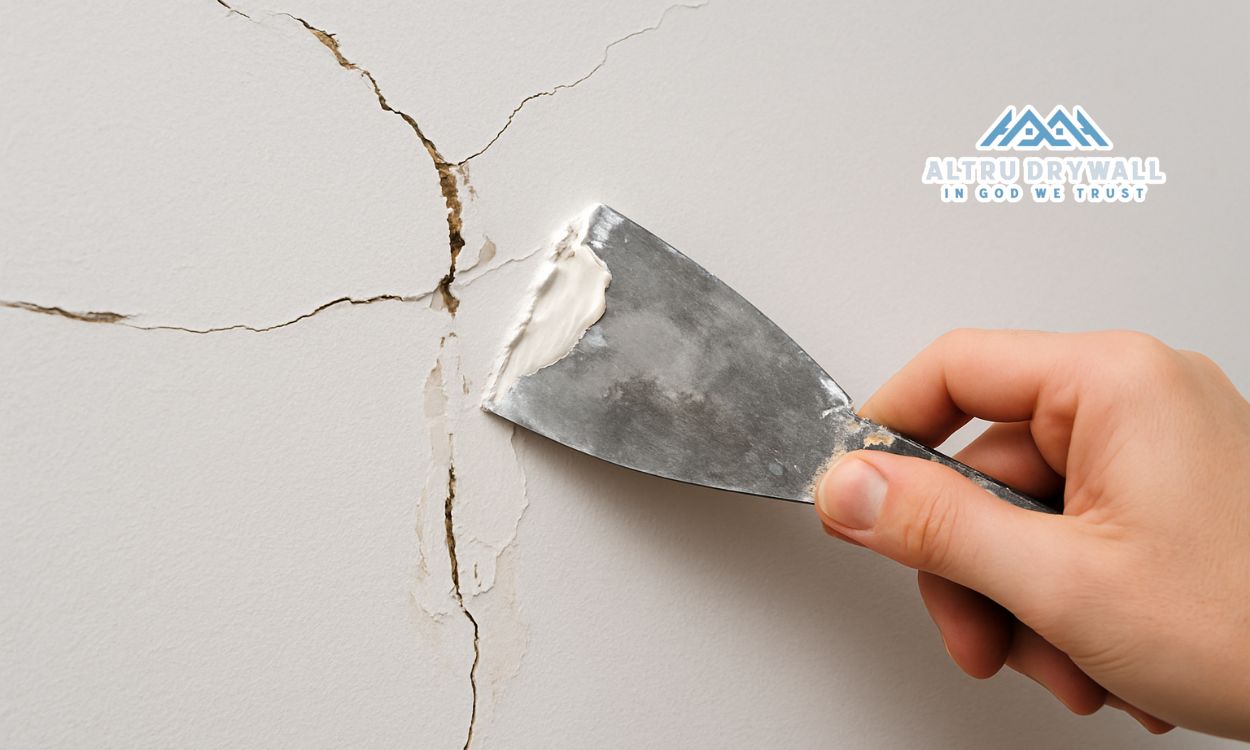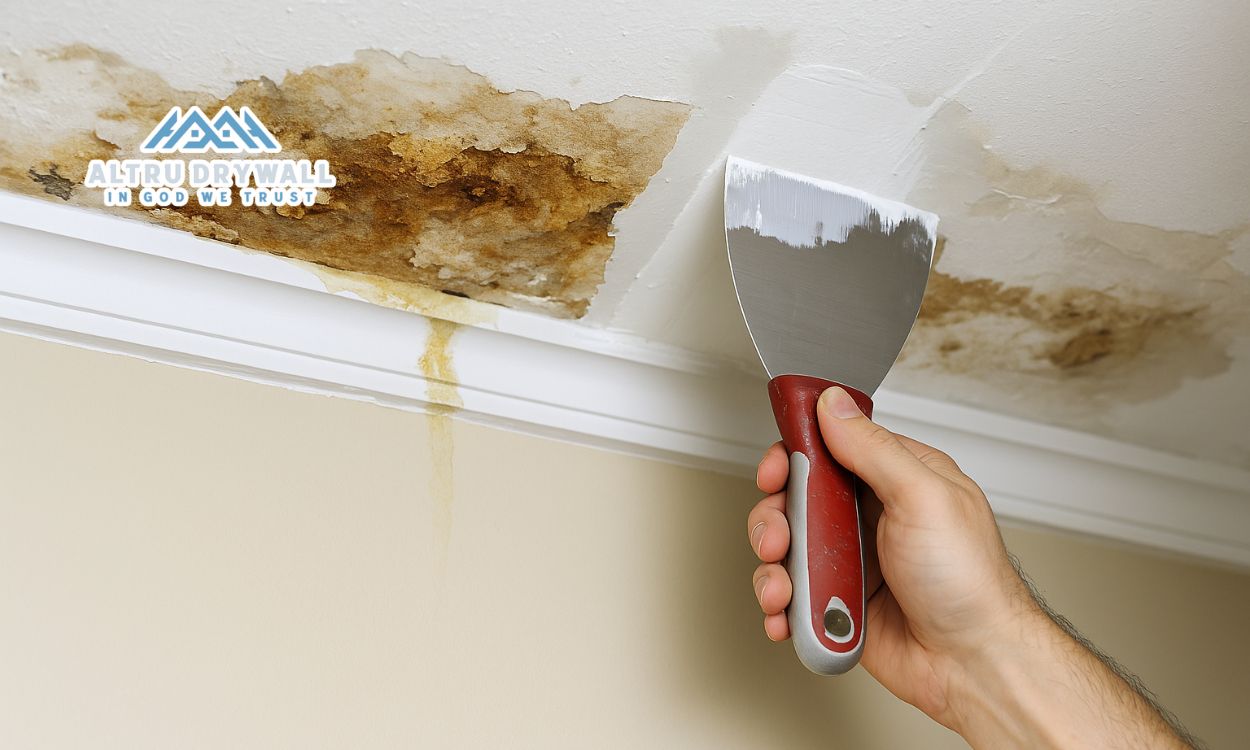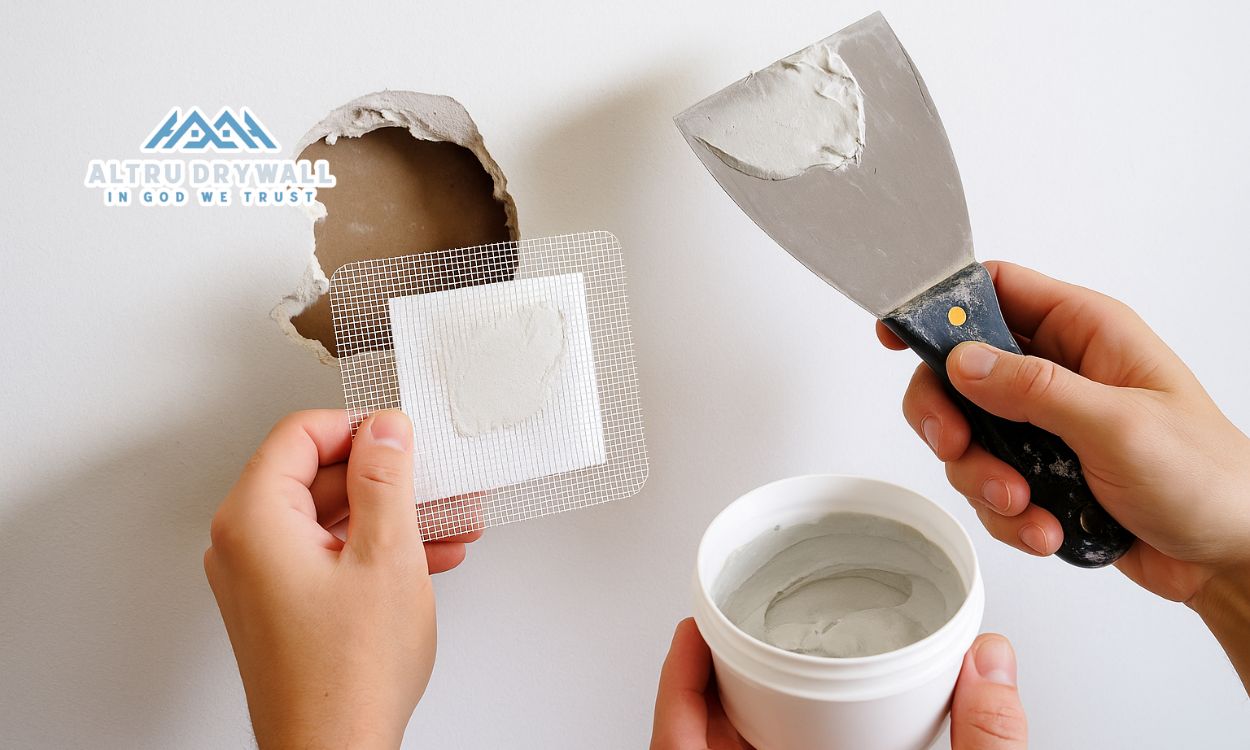Fire safety is a top priority for every property owner. Whether you’re building a new home or renovating a garage, it’s essential to understand the materials that can help protect your space. So, what is fire-resistant drywall? Everything you need to know is in this article, from composition and types to cost, benefits, and building code requirements.
What Is Fire-Resistant Drywall?
Also known as fire-rated drywall, this specialized material is designed to resist fire and slow its spread. While it won’t make your home completely fireproof, it significantly improves safety by giving occupants more time to evacuate and reducing structural damage.
Fire-resistant drywall is made with glass fibers and other non-combustible additives that increase its ability to withstand high temperatures. The most common type is Type X drywall, which is commonly used in walls and ceilings that require a fire rating.
Is Drywall Fireproof or Flammable? Understanding the Basics
Many homeowners ask: Is drywall flammable? The short answer is no—standard drywall contains gypsum, a naturally non-combustible mineral. However, its paper facing can burn if exposed to direct flames. That’s why fireproof drywall, also known as fire-resistant drywall, is used in critical areas to slow down the spread of fire.
Fire drywall, or fire-rated drywall, is specifically manufactured with added materials like fiberglass to increase drywall fire resistance. It helps delay structural damage and provides valuable time during emergencies. The fire rating of drywall is a measurement of how long it can withstand fire exposure—typically 1 hour for Type X and up to 2 hours for Type C.
If you’re wondering, is all drywall fire rated? The answer is no. Only products labeled fire-resistant sheetrock or fire-rated drywall carry specific drywall fire ratings.
Types of Fire-Resistant Drywall
There are several types of fire-resistant drywall, each serving different purposes and offering varying levels of protection:
1. Type X Drywall
- The most widely used fire-rated drywall
- 5/8-inch thick with fiberglass reinforcement
- Offers 1-hour fire resistance
2. Type C Drywall
- Offers enhanced fire protection compared to Type X
- Contains more additives for added integrity during a fire
- Often required in commercial or high-risk environments
3. Fire-Rated Drywall with Moisture Resistance
- Combines fire and moisture protection
- Ideal for bathrooms, kitchens, and utility rooms
Fire-Resistant Drywall vs. Regular Drywall
Many people wonder about the difference between fire-resistant drywall vs regular drywall:
| Feature | Regular Drywall | Fire-Resistant Drywall |
|---|---|---|
| Fire Protection | Minimal | Rated up to 1 hour or more |
| Core Material | Gypsum | Gypsum + fiberglass additives |
| Common Thickness | 1/2 inch | 5/8 inch (Type X) |
| Cost | Lower | Slightly higher |
Fire-rated options are best suited for areas that require added protection by code, such as attached garages and furnace rooms.
How Does Fire-Resistant Drywall Work?
So, how does fire-resistant drywall work? The key lies in the additives. Fiberglass mixed into the gypsum core slows heat transfer and reinforces the board structure during exposure to flames.
Additionally, fire-resistant drywall is designed to retain its shape longer, preventing early collapse or disintegration of walls during a fire.
Fire-Retardant vs. Fireproof Drywall: What’s the Difference?
While often used interchangeably, fireproof drywall and fire-retardant drywall refer to different levels of protection. Fire-retardant drywall, such as Type X, is designed to resist fire but will eventually break down with sustained heat. True fireproof sheetrock doesn’t exist in a residential context, but products labeled heat-resistant drywall or non-combustible drywall are designed to delay ignition and minimize spread.
If you’re evaluating fire-resistant drywall vs regular, consider:
- Core Composition: Fire-rated products include fiberglass and additional additives.
- Fire Rating: Standard drywall lacks a rating; fire-rated drywall typically offers a 1-2 hour delay.
- Application: Required in walls between garage and home, furnace rooms, and shared walls in duplexes.
Ultimately, drywall fireproofing is about buying time, not absolute fire prevention.
Benefits of Fire-Resistant Drywall
Installing fire-rated drywall provides several benefits:
- 🛡️ Enhanced fire safety
- 🏠 Compliance with local building codes
- 💰 Lower insurance premiums
- 🧱 Increased structural integrity
- 🔧 Easy to work with for contractors
Where to Use Fire-Resistant Drywall
Knowing where to use fire-resistant drywall is essential to meet safety requirements and maximize protection:
- Attached garages (especially ceilings beneath living spaces)
- Furnace or boiler rooms
- Shared walls between residential units (e.g., duplexes or townhomes)
- Commercial kitchens and utility rooms
- Stairwells and corridors in multifamily buildings
Fire-Rated Drywall Thickness
The standard fire-rated drywall thickness is 5/8-inch. However, in some cases, double layers of Type X or Type C drywall may be required for enhanced protection.
Fire-Resistant Drywall Code Requirements
Different municipalities have different fire-resistant drywall code requirements, but generally:
- 1-hour rating is required for garage-to-house walls and ceilings
- 2-hour rating may be required in commercial or multifamily buildings
- Use of Type X or Type C panels is mandated by code in specified locations
Check with your local building authority or contractor for exact specifications.
Installing Fire-Resistant Drywall
Installing fire-resistant drywall is similar to installing standard drywall, but with a few best practices:
- Use Type X screws or fasteners
- Space fasteners appropriately for code compliance
- Stagger seams for enhanced fire performance
- Seal joints and edges carefully
Hiring professionals ensures installation meets safety standards. Need help? 👉 Get a free quote from Altru Drywall.
Where Is Fire-Rated Drywall Required? Key Applications & Costs
Building codes often dictate where fire-rated drywall is required. Common applications include:
- Walls adjacent to attached garages
- Furnace or mechanical rooms
- Ceilings beneath living spaces
- Apartment or townhouse shared walls
When choosing materials, compare fire rating for drywall options. Type X and Type C differ in price and performance:
- Fire-rated drywall cost ranges from $18–$35 per sheet
- Installation labor ranges from $1.50–$3.50 per sq ft
For high-risk areas, use fire retardant sheetrock or heat-resistant sheetrock to meet code and ensure safety.
Looking to upgrade your property with fire wall drywall or fire-rated solutions? Contact Altru Drywall for code-compliant, cost-effective installation today!
Fire-Resistant Drywall Cost
Wondering about the fire-resistant drywall cost? Here’s a quick overview:
| Type | Average Cost Per Sheet (4×8 ft) |
| Regular Drywall | $12 – $20 |
| Type X Drywall | $18 – $30 |
| Type C Drywall | $25 – $35 |
Labor costs for installation may range between $1.50 – $3.50 per sq ft, depending on complexity.
How to Identify Fire-Resistant Drywall
When sourcing or inspecting drywall, here’s how to identify fire-resistant drywall:
- Look for Type X or Type C printed on the back paper
- Check for UL fire-rating stamp
- Confirm thickness (typically 5/8″)
If in doubt, consult a drywall contractor or supplier.
Best Fire-Resistant Drywall for Home
For most homeowners, Type X drywall is the best fire-resistant drywall for home use. It balances cost and protection, meets code for garages and basements, and is widely available.
Use Type C if you’re seeking maximum fire resistance for high-risk zones or commercial applications.
Final Thoughts
Understanding what is fire-resistant drywall? Everything you need to know is about making smart, safe choices for your property. Whether you’re building, remodeling, or upgrading one room, fire-rated drywall is a small investment with big protection.
If you’re planning drywall installation or upgrades in New Jersey, let Altru Drywall handle your project professionally and up to code.
📞 Request a free consultation today:
👉 https://altrudrywall.net/drywall-repair/
Altru Drywall – Protecting Your Space, One Panel at a Time







